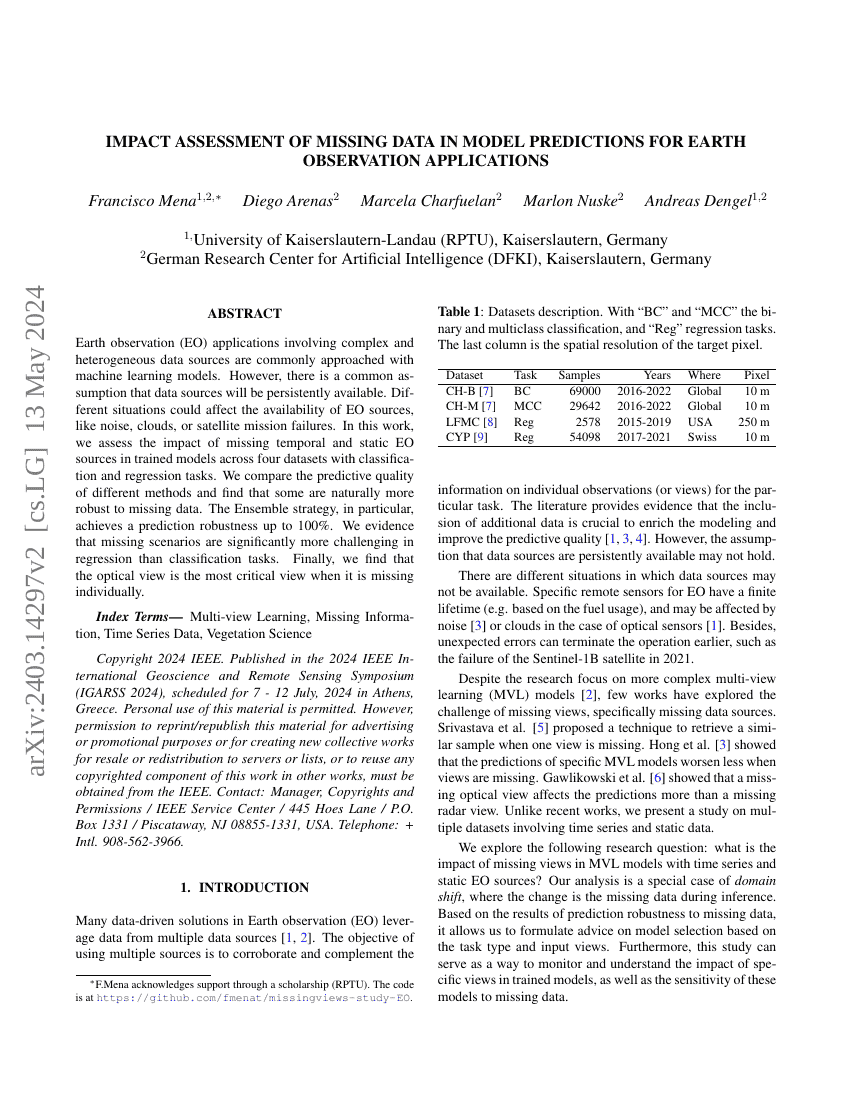Command Palette
Search for a command to run...
Impact Assessment of Missing Data in Model Predictions for Earth Observation Applications
Mena Francisco ; Arenas Diego ; Charfuelan Marcela ; Nuske Marlon ; Dengel Andreas

Abstract
Earth observation (EO) applications involving complex and heterogeneous datasources are commonly approached with machine learning models. However, there isa common assumption that data sources will be persistently available. Differentsituations could affect the availability of EO sources, like noise, clouds, orsatellite mission failures. In this work, we assess the impact of missingtemporal and static EO sources in trained models across four datasets withclassification and regression tasks. We compare the predictive quality ofdifferent methods and find that some are naturally more robust to missing data.The Ensemble strategy, in particular, achieves a prediction robustness up to100%. We evidence that missing scenarios are significantly more challenging inregression than classification tasks. Finally, we find that the optical view isthe most critical view when it is missing individually.
Code Repositories
Benchmarks
| Benchmark | Methodology | Metrics |
|---|---|---|
| crop-classification-on-cropharvest-global | Input Fusion | Average Accuracy: 0.847 |
| crop-classification-on-cropharvest-global | Feature Gated Fusion | Average Accuracy: 0.849 |
| crop-classification-on-cropharvest-global | Ensemble strategy | Average Accuracy: 0.828 |
| crop-classification-on-cropharvest-multicrop | Ensemble strategy | Average Accuracy: 0.715 |
| crop-classification-on-cropharvest-multicrop | Input Fusion | Average Accuracy: 0.738 |
| crop-classification-on-cropharvest-multicrop | Feature Gated Fusion | Average Accuracy: 0.734 |
Build AI with AI
From idea to launch — accelerate your AI development with free AI co-coding, out-of-the-box environment and best price of GPUs.